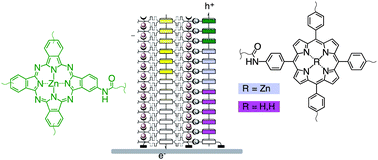Double-channel photosystems with antiparallel redox gradients: templated stack exchange with porphyrins and phthalocyanines†
Abstract
We report the synthesis of multicomponent surface architectures composed of

* Corresponding authors
a
Department of Organic Chemistry, University of Geneva, Geneva, Switzerland
E-mail:
stefan.matile@unige.ch
Web: www.unige.ch/sciences/chiorg/matile/
Fax: +41 22 379 3215
Tel: +41 22 379 6523
We report the synthesis of multicomponent surface architectures composed of

 Please wait while we load your content...
Something went wrong. Try again?
Please wait while we load your content...
Something went wrong. Try again?
G. Sforazzini, R. Turdean, N. Sakai and S. Matile, Chem. Sci., 2013, 4, 1847 DOI: 10.1039/C3SC00041A
This article is licensed under a Creative Commons Attribution 3.0 Unported Licence. You can use material from this article in other publications without requesting further permissions from the RSC, provided that the correct acknowledgement is given.
Read more about how to correctly acknowledge RSC content.
 Fetching data from CrossRef.
Fetching data from CrossRef.
This may take some time to load.
Loading related content
